Click on any of the images below to load a ![]() live performance.
live performance.
WHAT IS JAZZ?
Jazz is America’s classical music. In a four part lecture series, recorded live at the John F. Kennedy Center for the
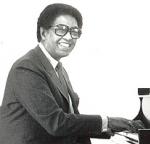
Performing Arts in Washington, D.C., Dr. Billy Taylor, noted jazz pianist, historian, and educator, shares glimpses of his extensive knowledge of jazz music from its roots in the African-American slavery experience, through the early days of ragtime, and onward through swing, bop, and progressive jazz. Dr. Taylor combines academic research with a wealth of personal knowledge of the music and shares many fascinating anecdotes about the great artists of jazz. He cautions, however, that four hours is only long enough to scratch the surface. For an in depth look at jazz history, get a copy of “Jazz Piano, A Jazz History.”
Click here to hear Dr. Taylor’s presentations in their original order.
INTRODUCTION TO JAZZ
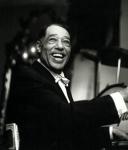
A non-technical, non-musical term outline for new jazz listeners. Click on an image to load a YouTube video clip.
Live Jazz Performance Etiquette
“The burden that improvisation puts on musicians can be daunting. Audiences for jazz expect that what they are
hearing live on a particular occasion is different from what any other musician would play, and – unlike pop audiences – different from what they have heard even on the performer’s recordings.
“If the same piece is played again later in the evening it, too, is expected to sound new. (The applause given to each jazz solo – rather than just the tune itself, as in pop music – rewards the fulfillment of this expectation, even if only as a formality.)” Jazz 101, John F. Szwed
JAZZ STYLES and a SAMPLE OF PERFORMERS AND COMPOSERS
(References used are: Amazon.com & Wikipedia)
NEW ORLEANS – TRADITIONAL JAZZ (1900-1925) —
Amazon.com
The earliest jazz, as conceived in and around New Orleans at the turn of the century, was at once earthy and elegant. If the music’s legend focuses on the red-light district of Storyville, the music itself drew as much from European and American brass-band music as it did from the vernacular of early blues and ragtime, while the technical prowess of its best players was obvious given the music’s emphasis on collective improvisation rather than individual solos. The road from early architects like trumpeter Buddy Bolden to the more urban, modern sounds of Fats Waller, Art Tatum, Duke Ellington, and Crescent City native Louis Armstrong was dotted with the lively dance rhythms, joyful attack, and brassy sheen of the music, and before long, jazz was a craze.
Wikipedia
Trad jazz, short for “traditional” jazz is a music genre popular in Britain and Australia from the 1940s onward through the 1950s and which still has enthusiasts today. It represented a recreation of the sounds and playing styles of New Orleans dixieland jazz. British and Australian bands of this genre copied the playing style of such artists as Sidney Bechet or King Oliver.
Opinions are divided about whether “trad jazz” is a valid name because one point of view would have it that jazz is a folk music tradition like any other, while the opposite point of view holds that jazz playing breaks loose from traditions and conventions so that, therefore, “traditional jazz” is a contradiction in terms.
In Britain during the 60’s trad jazz was used to dance skip jive, a descendant of jive and swing dance.
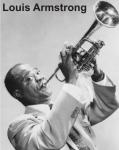
For definition, many aficionados today consider trad to be the traditional playing of a piece with solo after solo leading up to a finish. Some feel that “hot jazz” though similar to trad, and indeed containing many of the same tunes, was more ensemble playing with less individual virtuosity brought to the forefront. Early King Oliver pieces define hot jazz to many. As individual performers began stepping to the front as soloists, the music changed. Ironically, one of ensemble players in King Oliver’s Original Creole Band, Louis Armstrong, was by far, the most influential of the soloists, creating a big demand for the new style of jazz in the late 1920’s and early 1930’s. Other influential stylists who are still revered in trad jazz circles today include Sidney Bechet, Bix Beiderbecke and Muggsy Spanier.
Art Tatum
Louis Armstrong
Jelly Roll Morton
Sidney Bechet
Preservation Hall Jazz Band
SWING (1925-1940) —
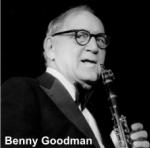
Amazon.com
During the 1930s, the rise of big bands straddled jazz, blues, and pop to attain massive crossover appeal, as swing ruled dance floors and airwaves alike. If blander pop orchestras were a major early inspiration for the scale of the music, jazz innovators gave the best music much of its bite. The best bands were distinguished by their brilliant players, while becoming de facto finishing schools for the next generation of jazz originals, including the young lions who would conceive bebop as a conscious step away from, and beyond, the rudiments of swing-jazz style.
Wikipedia
Swing music, also known as swing jazz, is a form of jazz music that developed during the 1920s and had solidified as a distinctive style by 1935 in the United States. Swing is distinguished primarily by a strong rhythm section, usually including double bass and drums, medium to fast tempo, and the distinctive swing time rhythm that is common to many forms of jazz.
Duke Ellington
Count Basie
Glenn Miller
Benny Goodman
Woody Herman
Fletcher Henderson
BEBOP (1940-1950) —
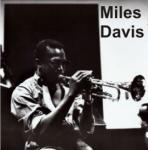
Amazon.com
During the 1940s, New York’s 52nd Street became ground zero for a Manhattan project of a different stripe: inside the clubs that dotted that fabled midtown street, young jazz musicians restless to find a new, post-swing style took bold improvisational leaps. While they still used popular songs of the day as their starting point, bop’s pioneers–most notably Charlie Parker, Dizzy Gillespie, Thelonious Monk, and Bud Powell–unspooled complex, intricately re-harmonized new music at breakneck speeds. In the wake of big band’s massive pop success, these mavericks preferred small ensembles–the musical equivalent of commando squads–able to move swiftly and nimbly. And while their innovations divided the jazz community, they created a style that continues to influence great performances today.
Wikipedia
Bebop or bop is a form of jazz characterized by fast tempos and improvisation based on harmonic structure rather than melody. It was developed in the early and mid-1940s. It first surfaced in musicians’ argot some time during the first two years of the Second World War. Hard bop later developed from bebop combined with blues and gospel music.
Dizzy Gillespie Thelonious Monk
John Coltrane Sonny Rollins
Oscar Peterson Charlie Parker
Charles Mingus Miles Davis
HARD BOP OR AVANT-GARDE —
Amazon.com
If bop achieved escape velocity for post-World War II jazz, orbiting high above traditional song structures and performing styles, the late 1950s found jazz venturing into a whole new galaxy. The emergence of an avant-garde jazz aesthetic was measured by composers and performers willing to jettison the old forms to explore new, open-ended improvisations; abandon familiar rhythms for increasingly complex tempos (or none at all); and tear up conventional theory to explore daunting new harmonic concepts. That exploratory spirit lives on in the work of modern experimenters. Click on an image to load a YouTube video clip.
Wikipedia
Hard bop is an extension of bebop (bop) music which incorporates influences from rhythm and blues, gospel music, and blues, especially in the saxophone and piano playing.
Its bass playing is more varied, due in part to the prominence of such virtuosos as Charles Mingus and Ray Brown; it is in part intended to be more accessible to audiences unfamiliar with or not fond of bop. David H. Rosenthal also
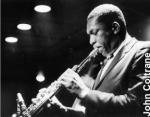
contends in his book Hard Bop that it is to a large degree the natural creation of a generation of black American musicians who grew up at a time when bop and rhythm and blues were the dominant forms of black American music and jazz musicians as prominent as Tadd Dameron worked in both genres.
Hard bop musicians include Cannonball Adderley, Art Blakey, Clifford Brown, Donald Byrd, Sonny Clark, John Coltrane (see photo), Lou Donaldson, Miles Davis, Kenny Drew, Benny Golson, Dexter Gordon, Joe Henderson, Andrew Hill, Freddie Hubbard, Jackie McLean, Charles Mingus, Blue Mitchell, Hank Mobley, Thelonious Monk, Lee Morgan, Sonny Rollins and Horace Silver.
Hard bop was developed in the 1950s and 1960s and enjoyed its greatest popularity in that era, but hard bop performers, and elements of the music, remain popular in jazz.
Soul jazz developed from hard bop.
COOL JAZZ (1950s) —
Amazon.com
Bebop was flying high when Claude Thornhill, Miles Davis, Gil Evans, and other postwar jazz pilgrims took a left turn away from bop’s kinetic pace and harmonic exuberance to sculpt more subdued music noteworthy for its restraint.
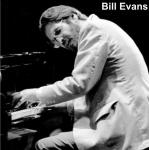
Cool jazz was a conscious alternative, chilling out with arrangements that left telling space, augmenting the harmonic fabric with subtle excursions into modal harmony, or gently reinventing ensemble instrumentation in its balance of tonal colors. The cool school was particularly well received in California, where a nascent West Coast jazz community was often equated with the cool movement outright
Bill Evans (Sunday at the Village Vanguard) see photo
Modern Jazz Quartet
Miles Davis (Birth of the Cool & Sketches of Spain)
Stan Getz
Paul Desmond / Dave Brubeck (Time Out)
Gerry Mulligan / Ben Webster (Gerry Mulligan Meets Ben Webster)
Cannonball Adderley
FREE JAZZ —
Amazon.com
No school of jazz musicians has taken the music to greater extremes than those associated with free jazz. Given that the music’s premium on improvisation invests most live performances with an element of risk, the radical innovations of seminal free-jazz thinkers–starting with Cecil Taylor and Ornette Coleman–leave virtually all the recognizable

landmarks of musical structure behind. At its most daunting, free jazz is pure improvisation, but many of the titles here demonstrate ways in which jazz broke free from strictures and musical rules–even when the music was largely composed. In other words, this music is free from various bindings, whether harmony, melody, standard tempo, or all at once.
Wikipedia
Free jazz is a movement of jazz music which was developed in the 1950s and 1960s by artists such as Ornette Coleman, Eric Dolphy, Cecil Taylor, Albert Ayler, Joe Harriott, Archie Shepp, Bill Dixon and Paul Bley. Some of the best known examples are the later works of John Coltrane. Though the music produced by these players varied widely, the common feature was a dissatisfaction with the expressive possibilities of bebop, hard bop, and modal jazz; each in his own way, free jazz musicians attempted to break down or extend the conventions of jazz, often by discarding hitherto invariable features of jazz such as fixed chord changes or tempos.
Though “free jazz” is the generally used term nowadays, many other terms have been used. In the 1960s, the loosely-defined movement was sometimes called “Energy Music” or “The New Thing”. Free-jazz players were other said to be playing “outside” or “out” (as opposed to “inside”–conventionally), and the word became a favorite one among musicians and record labels: albums from this period include Outward Bound, Out There, Out to Lunch (all by Dolphy), Out Front (Jaki Byard), and Destination Out (Jackie McLean).
While free jazz is most often associated with the era of its birth, many musicians — including Ken Vandermark, William Parker, John Zorn, Paal Nilssen-Love and George Lewis (trombonist) — have kept the style alive to the present day, continuing its development as a jazz idiom. In Europe the style was further extended by players such as Derek Bailey, Peter Brötzmann and Evan Parker into an idiom that came to be called “free improvisation.”
Albert Ayler
Sun Ra (Atlantis)
Cecil Taylor
Ornette Coleman (Free Jazz)
Charles Lloyd
Keith Jarrett
The Art Ensemble of Chicago (Urban Bushmen)
The Bad Plus
Miles Davis (Bitches Brew)
Dave Holland
Bill Frisell
Pat Metheny
LATIN JAZZ —
Amazon.com
The earliest jazz often toyed with its “Spanish tinge,” a natural genetic link to the Latin legacy of its New Orleans birthplace, and the dialogue between American jazz and Latin American folk, pop, salsa, and jazz has provided a half
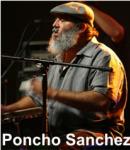
century of frequently intoxicating music. From the late 1940s, Latin-jazz pioneers like Cuba’s Chano Pozo and Machito teamed with bebop’s leading lights to create roiling, infectious music built around intricate African and Latin rhythms, setting a dizzying standard for fast, precise music that became a crucible for great players in both cultures.
Wikipedia
Latin jazz is the general term given to music that combines rhythms from African and Latin American countries with jazz harmonies from Latin America, the Carribean, Europe and United States.
The two main categories of Latin Jazz are Brazilian and Afro-Cuban.
Brazilian Latin Jazz includes bossa nova and samba.
Afro-Cuban Latin Jazz includes salsa, merengue, songo, son, mambo, bolero, charanga and cha cha cha.
One of the contribution of Latins (Latinos in Spanish) to America, Latin Jazz was further popularized in the late 1940s when Dizzy Gillespie and Stan Kenton began to combine the rhythm section and structure of Afro-Cuban music, exemplified by Machito and his Afro-Cubans, with jazz instruments and solo improvisational ideas. Stan Kenton released an arrangement of the Afro-Cuban tune The Peanut Vendor, which is considered by many to be the first Latin Jazz recording of the American Jazz counterparts. In 1947, Dizzy Gillespie collaborated with Machito conga player Chano Pozo to perform the “Afro-Cuban Drums Suite” at Carnegie Hall. This concert brought Latin-Jazz to the attention of others, and Pozo remained in Gillespie’s band to produce “Cubana Be, Cubana Bop”.
In comparison to American Jazz, Latin Jazz employs straight rhythm, rather than swung rhythm. Latin Jazz rarely employs a backbeat, using a form of the clave instead. The conga, timbale, güiro, and claves are percussion instruments which often contribute to a Latin sound.
Samba originates from nineteenth century Afro-Brazilian music such as the Lundu. It employs a modified form of the clave. Bossa Nova is a hybrid music based on Samba’s rhythm but influenced by European and American music from Debussy to US jazz. Bossa Nova originated in the 1960s, largely from the efforts of Brazilians Antonio Carlos Jobim and João Gilberto, and American Stan Getz. Its most famous song is arguably The Girl from Ipanema sung by Gilberto and his wife, Astrud Gilberto.
Latin jazz music, like most types of jazz music, can be played in small or large groups. Small groups, or combos, often use the Be-bop format made popular in the 1950s in America, where the musicians play a standard melody, many of the musicians play an improvised solo, and then everyone plays the melody again. In Latin jazz bands, percussion often takes a center stage during a solo, and a conga or timbale can add a melodic line to any performance.
Tamba 4
Antonio Carlos Jobim (The Girl from Ipanema)
Hilton Ruiz (Manhattan Mambo)
Cal Tjader (Black Hawk Nights)
Tito Puente (Top Percussion)
Mongo Santamaria (Skin on Skin)
Stan Getz (Jazz Samba)
Poncho Sanchez (Latin Soul) see photo
Caribbean Jazz Project
Arturo Sandoval
JAZZ FUSION —
Amazon.com
Against the turbulent backdrop of the 1960s, jazz struggled with often divergent camps, few of them more polarizing than a deal struck with the devil between jazz and rock. That short-lived hyphenate was actually but one of several parallel fusion streams mingling the improvisational freedom, technical mastery, and compositional ambitions of jazz with techniques and tools from non-jazz music. From rock firepower to world-music esoterica, fusion architects have drawn from different styles to craft their own hybrids. Click on an image to load a YouTube video clip.
Wikipedia
Jazz fusion (or “jazz-rock fusion” or fusion) is a musical genre that merges of jazz with other styles of music, particularly rock, funk, R&B, electronic music and world music. Fusion albums — even those that are made by the same artist — often include a variety of these musical styles.
In the late 1960s, jazz musicians began mixing the forms and improvisational techniques of jazz with the electric
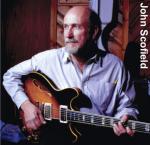
instruments of rock and the rhythms of “soul” and “rhythm and blues.” At the same time, some rock artists began to adding jazz elements to their music. The 1970s were the most visible decade for fusion, but the style has been well represented during more recent times. Rather than being a codified musical style, fusion can be viewed as a musical tradition or approach. Some progressive rock music is also labeled as fusion.
Fusion music is typically instrumental (i.e., without vocals), often with complex time signatures, metres, rhythmic patterns, and extended track lengths, featuring lengthy improvisations. Many prominent fusion musicians are recognized as having a high level of virtuosity, combined with complex compositions and musical improvisation in metres rarely seen in other Western musical forms, perhaps best recognized in the work of jazz composers Dave Brubeck and Don Ellis.
Bill Frisell
John Scofield
Bela Fleck
Weather Report
John McLaughlin
Billy Cobham
Chick Corea
Herbie Hancock
Brad Mehldau
Medeski, Martin, & Wood
ACID JAZZ —
Amazon.com
Less a pure spinoff than a jazz invasion from the dance floor, acid jazz offers one of the more intriguing experiments in jazz’s history. Whether mating melodic R&B inflections with jazz instrumentation and dance beats, or plying a retro

affection for the greasy funk of early-’60s soul jazz, the acid camp marks one of the most good-humored and least pretentious takes on jazz–and one that, contrary to jazz purists’ discomfort, actually revisits early jazz stylists’ penchant for dance rhythms.
Wikipeida
Acid jazz (also known as club jazz) is an electronica musical genre that combines elements of soul music, funk, disco and also 90s English dance music, particularly repetitive beats and modal harmony. It has only a very vague (if any at all) jazz music influence. It developed over the 1980s and 1990s and could be seen as taking the sound of Jazz-Funk onto electronic dance / pop music.
Acid Jazz is not jazz in the pure sense of the word, as it does not typically involve musicians playing instruments in an improvisational setting. Rather, it tends to use samples culled from old jazz and funk recordings, as well as electronic instruments and synthesizers.
A lot of the Acid Jazz “movement” is also seen as a “revival” of Jazz-Funk or Jazz-Fusion or soul jazz by Leading DJs such as Norman Jay or Gilles Peterson or Patrick Forge. AKA “Rare Groove” crate diggers.
Medeski, Martin & Wood (see photo)
John Scofield (A Go Go)
James Taylor Quartet (Mission Impossible)
SMOOTH JAZZ —
Wikipeida
Smooth jazz is generally described as a genre of music that utilizes instruments (and, at times, improvisation)
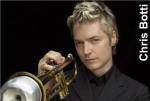
traditionally associated with jazz and stylistic influences drawn from, among other sources, funk, pop and R&B. Since the late 1980s, it has become highly successful as a radio format; one can tune in to a “smooth jazz”-themed station nearly everywhere in the United States. Despite its apparently large following, there has been something of a backlash against the genre, mostly from jazz purists who consider its recordings bland and overly commercial.
Chris Botti (see photo)
Dave Koz
Kenny G
Boney James
Keiko Matsui
Fourplay
Pieces of a Dream
Mindi Abair
MODERN POSTBEBOP —
Amazon.com
Jazz’s second century opens with a rich and varied family of different styles and movements, its New Orleans accents now joined by a chorus of influences from around the world and across the decades. If bop’s mid-century rise in the

1940s represented a great divide in how players approached the music, the 1960s, ’70s, and beyond introduced new generations of players for whom that high-wire sensibility is but one of various, interchangeable styles. The best players to emerge in the closing decades of the 20th century rise above the jazz community’s appetite for factionalism, often moving easily between different camps. Whether acoustic or electric, fusion friendly or Third Worldly, these artists transcend easy categorical tags to define modern postbop jazz. Click on an image to load a YouTube video clip.
Wynton Marsalis (Black Codes)
Branford Marsalis (Trio Jeepy)
Joshua Redman (Wish)
Steve Turre (In the Spur of the Moment)
Michel Petrucciani
Maria Schneider
Wayne Shorter
Herbie Hancock
Pat Metheny